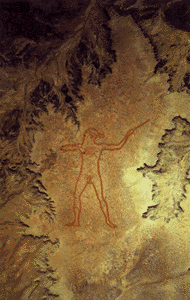BBC News’ Click Online’s series covers Google Earth in their article entitled Portal race goes local and global. It has some nice big-picture observations, but then the article’s credibility gets hammered by a whopper:
Google Earth has certainly hogged the limelight, but as we are discovering in this series, good ideas are rarely original. One day before Google Earth emerged, MSN launched Virtual Earth. It is not 3D, but the idea is pretty much the same.
Google Earth was launched June 28. MSN Virtual Earth was launched July 24/25. JFGI. When you get your basic chronology wrong, that somehow doesn’t inspire confidence in the authoritative tone of the rest of the article.
The New York Post, meanwhile, has found a Queens assemblyman (reg. req.), Michael Gianaris, who appears to have been shown Google Earth and who didn’t like what he saw. So he’s fired off a letter, cc-ing it to Homeland Security.
He grants that Google Earth “may be entertaining”, but notes:
Whenever terrorists are captured, their computers always contain photos and layouts of sensitive locations. And I don’t know what rationale could exist for providing them in any easy online format, free of charge.
Ah yes, those broke terrorists with their computers. I don’t know what rationale could exist for providing them with computers either, or the internet, for that matter. Let’s register fax machines too, Soviet style. Let’s close this Open Society, shall we, just to thwart the terrorists.
The Post ends with:
It’s not the first time that satellite photos have sparked concerns about security. The Pentagon says some areas are considered off limits to prying satellite cameras. And it has an agreement with two private firms, Digital Globe and Space Imaging, that limits the pictures they make public.
Just wait until they find out that unpatriotic foreign firms have no such agreements. I give them a week.
 We’ve been making art intended for aerial viewing for thousands of years; there’s the
We’ve been making art intended for aerial viewing for thousands of years; there’s the